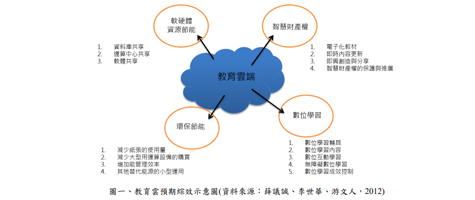Keywords: Cloud Security Evaluation Model, education cloud, cloud computing, content analysis, Fuzzy Delphi Method
Pi-Ju Tsai1 , Chun-Hao Lin2 , Yin-Lam Ho2 , Vin-Nhan Ho2 , Po-Yuan Chang2 , Hsuan-Tzu Hung2 , Peng-Ting Chen3*
1Department of Business Administration, I-Shou University,
2Department of Business Administration, National Kaohsiung University of Science and Technology
3Department of Biomedical Engineering, National Cheng Kung University 1 This email address is being protected from spambots. You need JavaScript enabled to view it., 3 This email address is being protected from spambots. You need JavaScript enabled to view it.
Abstract
Cloud computing is growing quick and well, providing users with shared software and hardware resources and messaging services, bringing information interoperability, portability and mobility. Many countries are actively promoting cloud information systems and applying them in various industries. Cloud information system brings many benefits and breakthroughs in education, but the security of cloud information systems has always been a topic of concern. The purpose of this study is to understand the security issues of cloud information systems and the security concerns that educational institutions face when using cloud information systems. After integration and analysis, the key security factors for educating cloud information systems are selected. The first phase of the study uses content analysis to deal with the results of interview of educational institutions, to understand the security concerns faced by educational institutions in using education cloud information systems. In the second stage, a literature review was conducted to summarize the safety issues mentioned and integrated with the analysis results of the first phase to summarize the safety factors of the education cloud information system. Third, design expert questionnaire, through fuzzy Delphi method analysis, selected 12 key security factors with a threshold of 75.00, established a security assessment model for education cloud information system, enabling educational institutions to effectively evaluate education cloud information system.
References
- Cloud Security Alliance, Security Guidance for Critical Areas of Focus in Cloud Security. V3.0, 11-14. 2009.
- J. H. Che, Y. Duan, T. Zhang, and J. Fan, “Study on the Security Models and Strategies of Cloud Computing,” Procedia Engineering, 23, pp. 586-593, 2011. Google Scholar
- G. Gerbner, (1969). “Cultural indicators: The third voice,” Communication technology and social policy, New York: John Wiley, 1969.
- C. Jenkins, “The Three Pillars of a Secure Hybrid Cloud Environment,” Computer Fraud & Security, 6, pp. 13-15. 2013. Google Scholar
- S. Khaled, M. Jose, C. Alcaraz, B. B. Jorge, M. Juan, P. Marín, and Z. Sherali, “Analyzing the Security of Windows 7 and Linux for Cloud Computing,” Computers & Security, 34, pp. 113-122, 2013. Google Scholar
- J. W. Li, J. Li, X. F. Chen, X. L. Liu, and C.F. Jia, “Privacy-preserving Data Utilization in Hybrid Clouds,” Future Generation Computer Systems, 30, pp. 98-106. 2014. Google Scholar
- M. D. Ryan, “Cloud Computing Security: The Scientific Challenge, and a Survey of Solutions,” The Journal of Systems and Software, 86, pp. 2263–2268, 2013. Google Scholar
- S. Stein, J. Ware, J. Laboy, and H. E. Schaffer, “Improving K-12 Pedagogy via a Cloud Designed for Education,” International Journal of Information Management, vol. 33, no. 1, pp. 235-241, 2012. Google Scholar
- D. Sun, G. Chang, L. Sun, and X. W. Wang, “Surveying and Analyzing Security, Privacy and Trust Issues in Cloud Computing Environments,” Procedia Engineering, 15, pp. 2852-2856, 2011. Google Scholar
- 王石番,傳播內容分析法:理論與實證。臺北市:幼獅,1991。
- 王平、林文暉、郭溥村、王子夏、盧永翔,“雲端運算服務之資安風險與挑戰”,資 訊安全通訊,16,頁 45~65,2010。 Google Scholar
- 古亞薇,教育應用科技產品發展契機,產業情報研究所(MIC),2012。
- 朱敬一,“雲端運算之風險管理:網路、資安與企業運作”,內部稽核特刊,頁 29~30, 2013。
- 周祝瑛、劉豫敏,“雲端教育”,教育研究月刊,26,頁 125~138,2012。
- 余鑑、呂俊毅,“雲端運算及無所不在學習對公部門發展數位學習的啟示”。T&D 飛 訊,91,頁 1~15,2010。
- 余顯強,“淺談雲端運算在圖書館服務之應用”,國立成功大學圖書館館刊,20,頁 1~17,2011。 Google Scholar
- 林志達,“適用雲端運算之單一登入平台架構”,資訊安全通訊,16,頁 173~179, 2010。 Google Scholar
- 林育震,“掌控風險發揮雲端效益”,資訊安全通訊,16,頁 138~149,2010。 Google Scholar
- 洪長宏,“如何確保雲端架構運作之安全性 - 以縮減風險案例探討”,電腦稽核,26, 頁 115~120,2012。 Google Scholar
- 徐村和,“模糊德菲層級分析法”,模糊系統學刊,4,頁 59~72,1998。
- 徐慧民、衛萬明、蔡佩真,“應用分析網路程序法於建設公司住宅企劃方案優先順 序選擇之研究”,中華民國建築學會建築學報,62,頁 49~74,2007。 Google Scholar
- 陳廷煌,“雲端服務系統的文件交換分享風險管控”`,資訊安全通訊,17,頁 62~80, 2010。 Google Scholar
- 陳昭宏,“創業投資公司投資高科技產業模糊多準則評估之研究-以生物科技產業為 例”,輔仁管理評論,9,頁 87~110,2002。
- 陳聖棋、黃永亭,“企業資訊系統採用雲端運算之設計研究”,電腦稽核期刊,27, 頁 24~28,2013。 Google Scholar
- 張元杰、史欽泰、簡文強、柯盈兆,“國家型研發計畫評估:企業研發總部觀點”, 科技管理學刊,14,頁 1~28,2009。 Google Scholar
- 梁連文、李桐豪、黃博怡,“台灣銀行整併績效之探討 - 糢糊德菲法之應用”,台灣 金融財務季刊,11,頁 31~65,2010。 Google Scholar
- 梁連文、鍾宇軒、施光訓,“我國農企業資金融通機制之再造”,會計與財金研究,1,頁 33~46,2011。 Google Scholar
- 楊孝濚,“我國犯罪問題社會經濟因素的逐級迴歸分析”`,社會變遷中的犯罪問題及 其對策研討會論文集,台北:政治大學,1982。
- 黃永婷、魏良曲,“雲端治理框架初探”,電腦稽核期刊,26,頁 100~107,2012。 Google Scholar
- 黃惟伶,“雲端時代教育雲-解決教學資源不均問題”,Ectimes 電子商務時報,2011。
- 黃國彥,教育大辭書。國家教育研究院,http://terms.naer.edu.tw/detail/1302710/ (2010)。
- 蒲樹盛,“創新科技環境下的資訊管理重點 - 雲端資訊安全、個資隱私保護、營運 持續服務”,品質月刊,46,頁 22~25,2011。
- 維基百科,https://zh.wikipedia.org/wiki/雲端運算 (2019/3/11)
- 蔡一郎,“雲端運算與雲端安全架構”,資訊安全通訊,16,頁 84~93,2010。 Google Scholar
- 蔡一郎,“雲端安全與通訊架構研究”,資訊安全通訊,18,頁 62~68,2012。 Google Scholar
- 蔡天浩、陳彥仲、黃秀娟、黃培銘、周國森,“一種應用於虛擬平台之實體隔離機制”,資訊安全通訊,17,頁 52~61,2011。 Google Scholar
- 劉家驊、洪士凱,“雲端運算資料安全防護機制之研究”,電腦視覺、影像處理與資 訊技術研討會,頁 100~109,2010。 Google Scholar
- 賴森堂,“降低電子商務個人資料風險的安全事件偵測機制”。電腦稽核期刊,29, pp. 49~58,2014。 Google Scholar
- 薛夙珍、邱亭儒,“行動雲端書櫃之應用服務”,資訊科技國際期刊,7,頁 1~12, 2013。 Google Scholar
- 薛義誠、李世華、游文人,“雲端科技在教育上的運用”,教育研究月刊,216,頁 19~28,2012。 Google Scholar
- 謝佩璇,“教育雲端發展現況與挑戰”,教育研究月刊,26,頁 57~72,2012。
For more information about this article, please contact us here

